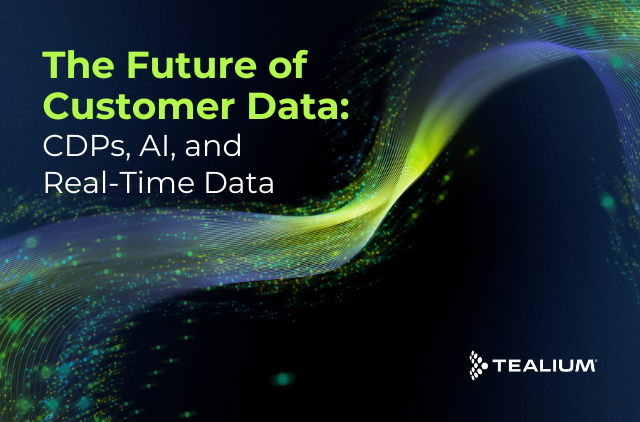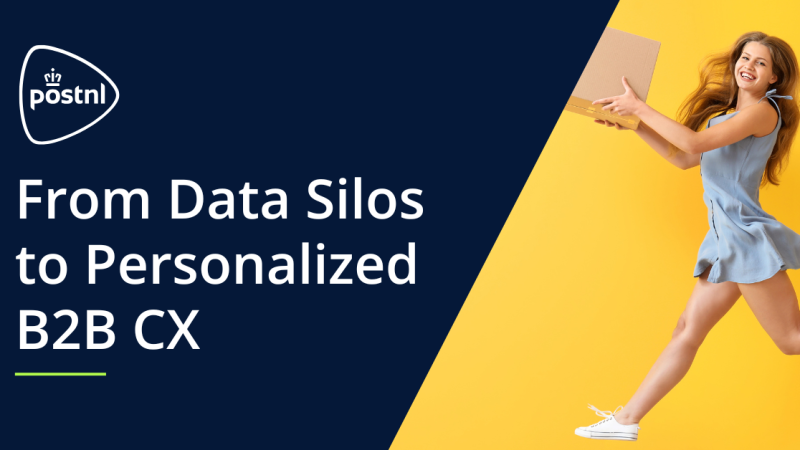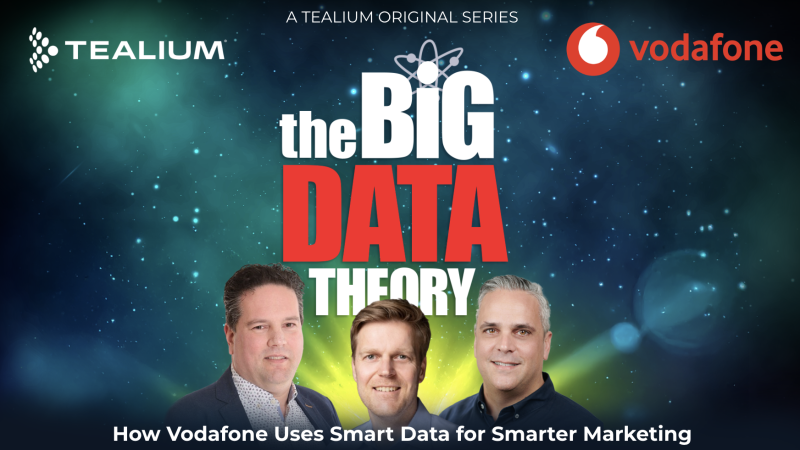Here at Tealium, we have been working on our Customer Data Platform, AudienceStream, since before “CDP” was a category of technology. Back in 2013 when we launched AudienceStream and nobody was asking about the benefits of a CDP, Netflix had just started to release its own original content, the NSA leaks woke people up to the issue of privacy, and wearables became mainstream.
Almost seven years later since launching AudienceStream CDP, the world looks a lot different. In many ways, the consumer, technological, and even regulatory changes have dovetailed together, driving companies to prioritize creating a trusted data foundation to meet all of these needs. That has turned CDPs, once a nice-to-have technology for high-performing, silo-busting organizations, into a must-have technology for companies to compete.
Let’s break down what’s happening in 2020— which has already broken the record for the longest year in history (the 2020 Olympics are still over a year away!)— to make companies look at the benefits of a CDP anew.
But first…
Let’s start by admitting that, if you’re looking to buy a CDP, it can be incredibly confusing to choose one. We’ve broken down the questions you need to ask before starting a CDP project already, but let’s make it simple. There are several broad ways to understand what a CDP does:
- It helps you aggregate customer data from all of your customer touch points.
- It helps you transform disjointed data points into a single, unified profile of the customer
- It helps you activate that context-rich data in the customer touch points again
While most Customer Data Platforms do all of this, the difference comes from how they’re built and the degrees to which they excel in each area. AudienceStream, for example, is a data-first CDP, meaning it prioritizes the quality and governance of data throughout the customer journey, while taking a vendor-neutral approach to what technology we work with. Other offerings specialize in activating customer data in specific channels like email, or in specific software ecosystems.
With that said, a good CDP should deliver the following benefits:
- Deliver a Single View of the Customer- CDPs unify first and third-party data sources to form a comprehensive 360-view of your customer across devices and channels, making that data available to your other tech and across the business.
- Impact Marketing and Customer Experience- Customers are using more channels and devices than ever before while demanding exceptional and relevant experiences. With a comprehensive set of customer data, CDPs fuel multi and cross-channel marketing with comprehensive, trusted data.
- Tear Down the Data Silos- The value of customer data extends across a business. CDPs give teams the ability to access and leverage customer data across departments accurately and effectively.
- Put the Customer at the Center- In order to enact customer-centered marketing, you must know your customers. CDPs equip you to manage your customer relationships and market with your audience in mind.
- Enable Operational Efficiency and Business Agility– CDPs enable businesses to build and connect a tech stack that adapts to the ever-changing consumer behavior with turnkey integrations, saving hours of integration work. Audiences and business rules are set up centrally and can be applied across various technologies saving huge amounts of time and money.
There are of course more benefits of a CDP, but these are the ones we see that are driving the most value today, thanks to the following changes and trends.
1. The Coming Data Privacy Regulations
Privacy regulations are bringing the benefits of a CDP into sharp relief. Right now, there are two major pieces of legislation companies are dealing with, but the floodgates for more will open up as more states and countries take action to protect consumers.
The EU’s General Data Protection Regulation (GDPR) kicked off the trend of privacy regulations aimed squarely at the way companies collect consumer data. With the promise of steep fines and changes to the definition of privacy as a right , companies have been working ever since to change the way they handle customer data.
Other countries and states have followed suit, most notably California’s Consumer Privacy Act (CCPA), which was the first in the nation to give consumers the right to know and delete the information companies collect, plus the right to sue for data misuse.
The average cost of initial compliance with the CCPA for businesses with over 500 employees is estimated to be $2 million. Where is all this money going? According to the California Department of Justice’s implementation of the CCPA requires a standardized regulatory impact assessment (SRIA)
(1) the technology and operations costs associated with implementing the CCPA; (2) the costs of complying with the 90-day lookback requirement for firms selling personal information to third parties; (3) the more detailed training requirements; (4) the more detailed record keeping requirements.
The benefits of a Customer Data Platform will particularly shine when it comes to streamlining the costs and operations around implementation and helping companies keep better records of customer data.
As more privacy regulations come online creating regional requirements, the ability to properly segment and control permissions for data use throughout the customer lifecycle will be paramount.
2. Increased Online Activity and the Need for Real-Time
In 2019, U.S. e-commerce growth was nearly 15%. 2020, of course, will be a different story. The effect of the Covid-19 pandemic has led to increased traffic and sales in certain sectors while slowing others. While the upswings and downturns will level out in the near future, the long-term effects on consumer behavior will likely encourage greater adoption of digital channels.
Whether it’s more people working from home and utilizing productivity software like Slack and Zoom or more people choosing to stream movies and shows rather than go out to the theater, the changes to societies across the globe will be profound.
With more online activity replacing the traditional in-store, face-to-face experience, brands will need to be able to collect, unify, and activate that data— preferably in real time. With so much changing so quickly— store closures, travel restrictions, health advisories— being able to communicate to the right customers quickly requires a customer data platform that works in real time.
A real-time CDP feeds the most up-to-date customer profile to every channel. Most companies have more customer data than they’ve ever had before, and if they’re not unifying every channel into that single view in real-time, critical information about individual customers may be left out as important communications are deployed.
3. Personalization Is the New CX Standard
Consumers, more than ever, demand experiences that are personalized to them. As of last year, “63% of consumers expect personalization as a standard of service and believe they are recognized as an individual when sent special offers.” With so many companies competing for limited consumer attention spans on social media and in email inboxes, delivering the right message to the right person is how companies will stand out.
However, some are souring on personalization. Recently, Gartner released a report which found that 80% of marketers will abandon personalization efforts by 2025. Why is that? In large part, the report finds that “marketers are spending an extraordinary amount of time and energy and budget collecting and integrating customer data. Not to mention data analysis, testing, and experimentation, figuring out what to personalize and then creating content.”
Take one look at the typical marketing stack with nearly two dozen products and it’s little wonder why marketers are struggling to manage customer data efficiently. Once you add in the technology from other customer-facing departments that are collecting relevant data, delivering a data-driven personalization program can seem impossible (without a CDP at least).
But the odds of consumers demanding fewer personalized experiences is unlikely— leading us to doubt the mass abandonment of personalization by marketers. Though some point to privacy concerns as a reason to scale back using customer data for personalization efforts, consumers’ demands for privacy and personalization make the case for a strong, secure data foundation— of which a CDP plays an important role by helping orchestrate data to the right place at the right time.
Further benefits of a Customer Data Platform for marketers looking to achieve personalization at scale include reducing the time spent collecting and integrating customer data, as well as providing a single point through which to disseminate a unified customer profile to the entire tech stack. This helps to ensure the right message gets to the right audience in every channel.
4. Cookies Are Slowly Being Eaten Up
Like a towering home run on a warm July evening, third-party cookies have been going, going, going…(almost) gone for years now. Google announced they’re phasing out third-party cookies in their popular web browser Chrome in the next two years. With access to third-party consumer data reduced, companies are turning more towards their first-party data they’ve collected on their own properties.
That means that pixels or cookies aren’t going away, as these are still critical for the collection data on your own properties. And that the data companies will have to work with, while less than before, will be higher value.
All of that high-value data will correlate to an individual user, making a Customer Data Platform a critical piece of technology as companies move away from the traditional model of third-party data-driven marketing. Better yet, investing in a CDP will help marketers gain further control over their first-party data futures today.
5. Machine Learning Widely Available, Not Widely Achievable
Machine learning is going to change the way many people work, especially data-driven marketers, analytics teams, and data scientists. But we’re still in the early stages of machine learning, and the grandiose notion of machines turning unkempt data lakes into actionable insights is, well, wrong.
Today’s machine learning projects, according to research from Dimensional Research and Aiegion, are struggling to get off the ground. 80% of companies engaged in ML projects have reported them as stalled, while 96% of the projects have “run into problems with data quality, data labeling required to train AI, and building model confidence.” Companies that are developing their own ML algorithms are finding that they can’t get clean data into the models.
That’s where the benefits of a CDP— especially a data-first CDP like AudienceStream— comes into play for machine learning. For ML projects focused on using customer data, a CDP can help ensure data is clean and correlated, providing assurance that the AI is being trained with consistent sets of data from model to model.
For companies that don’t have teams of data scientists to create customer algorithms, AudienceStream comes paired with Tealium Predict, our machine learning tool that’s helping companies make the most of their customer data. (See what companies are doing already with this new technology in our recent post here.)
Whether you’re creating your own models or using the ones provided by Tealium Predict, what will make machine learning widely achievable is the quality of the data going into the models. If you’re looking to make machine learning part of your organization, a the benefits of a CDP will be a critical part of your tech stack.
There are so many CDPs out there— over 100— and it can be confusing to find the right one. Download our 2020 State of the CDP report today to learn more about the industry, how companies are buying and implementing CDPs, and which type of CDP is right for you.

Download Your Copy Today
Learn what real CDP users think about the technology, including the challenges they face, the value they derive, and the future of the technology.
Download Now






